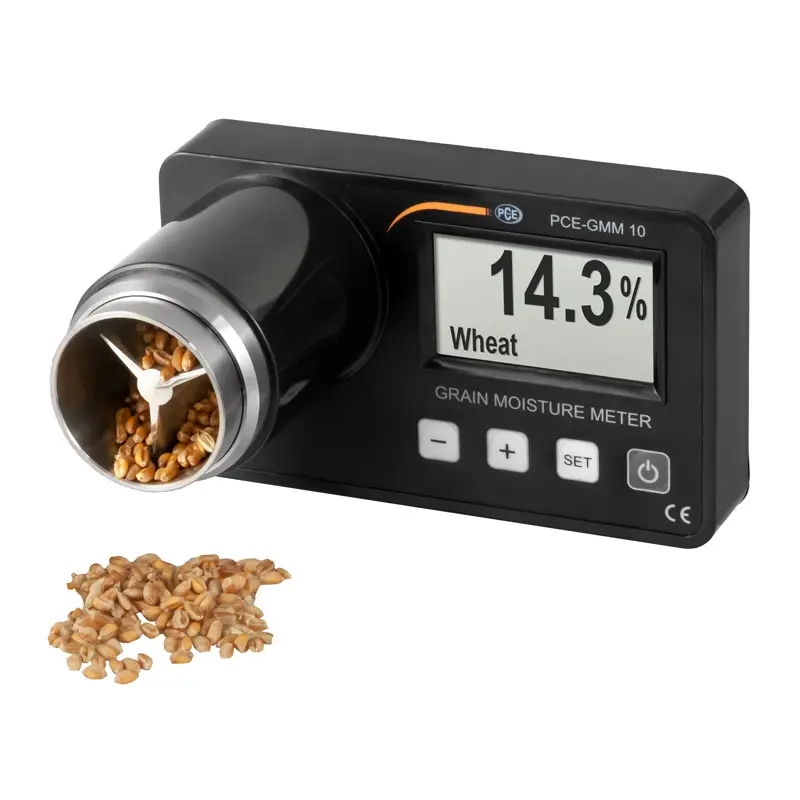Just How a Moisture Meter Can Improve Your Construction Projects and Stop Damages
Just How a Moisture Meter Can Improve Your Construction Projects and Stop Damages
Blog Article
The Ultimate Guide to Wetness Meters: A Comprehensive Introduction and Just How They Can Save You Cash
Wetness meters offer as crucial tools in detecting and monitoring moisture material in materials, assisting in protecting against expensive damages and making certain the quality of products. Recognizing the nuances of various types of dampness meters, their applications, and the potential cost-saving advantages they provide can be a game-changer for businesses and professionals alike.
Sorts Of Wetness Meters
Various sorts of dampness meters are available for different applications in numerous sectors. One common kind is the pin-type dampness meter, which measures the electrical resistance between 2 pins put into a product. This kind appropriates for timber, drywall, and other building products. Pinless dampness meters, on the other hand, use electromagnetic sensing unit plates to scan a bigger location without causing damages to the product's surface. Moisture Meter. These meters are excellent for swiftly evaluating wetness degrees in big areas such as walls and floorings.

Moreover, there are additionally specialized wetness meters developed for certain materials like soil, grain, or hay. These meters supply exact wetness readings customized to the special properties of the product being evaluated. Infrared dampness meters determine the thermal residential or commercial properties of a material to establish its wetness material non-invasively, making them useful for applications where pin or pinless meters might not be appropriate. Comprehending the different kinds of wetness meters readily available can assist industries pick one of the most ideal tool for their certain moisture measurement needs.

Advantages of Using Wetness Meters
Moisture meters use indispensable benefits in accurately analyzing and keeping an eye on wetness degrees in varied products and environments (Moisture Meter). One of the main advantages of using moisture meters is the prevention of possible damages caused by excess moisture. By identifying and dealing with high wetness degrees beforehand, moisture meters help to stop mold and mildew development, rot, and architectural damages in structures, conserving both time and money on repair work. Furthermore, wetness meters help in ensuring the quality of materials during building or manufacturing processes. By precisely gauging moisture material, these devices help maintain the stability of timber, drywall, concrete, and other products, minimizing the risk of failures or issues.
Additionally, utilizing moisture meters can result in boosted power effectiveness. By determining areas with high wetness degrees, such as leakages or poor insulation, adjustments can be made to enhance energy preservation and decrease energy prices. In agricultural settings, dampness meters play an essential role in maximizing plant returns by allowing farmers to keep an eye on dirt wetness levels and make notified watering choices. Generally, the advantages of using moisture meters extend throughout different industries, supplying economical services and promoting much better quality assurance methods.
Just How to Pick the Right Moisture Meter
When selecting a dampness meter, it's important to make certain that the meter is hop over to these guys ideal for the specific material you will certainly be screening. Different materials have varying electrical properties that can affect wetness analyses, so picking a meter made for your product is critical for accurate results. By carefully assessing these elements, you can select a wetness meter that fulfills your needs and provides accurate wetness dimensions for your tasks.
Appropriate Strategies for Moisture Meter Usage

Price Savings Through Moisture Meter Applications
How can the strategic application of wetness meters cause considerable price savings throughout numerous sectors? Moisture meters play a critical duty in cost financial savings by protecting against possible damages and ensuring quality assurance in different industries. In the agriculture industry, dampness meters help in identifying the optimal time for collecting plants, avoiding over-drying or excess dampness that can affect the final item's high quality. This accurate surveillance aids farmers prevent unnecessary losses and optimize their yield.
Likewise, in building, moisture meters aid protect against costly problems by spotting moisture degrees in structure products, such as timber or concrete, which can cause structural issues if not addressed quickly. By identifying trouble locations early on, contractors can take rehabilitative procedures to prevent comprehensive repair services or replacements, inevitably saving time and cash.
Moreover, in the food handling industry, wetness meters are important for view it monitoring product quality and making sure conformity with safety and security policies. By precisely determining dampness web content in food, producers can stop perishing, maintain freshness, and lower waste, leading to significant cost savings. Generally, the strategic application websites of wetness meters is a valuable financial investment that can result in considerable cost reductions and improved effectiveness throughout various markets.
Verdict
To conclude, moisture meters are valuable devices for measuring and discovering dampness levels in different materials. By using the appropriate moisture meter and complying with proper strategies, users can properly stop expensive damages caused by excess dampness. Purchasing a high quality moisture meter can lead to substantial expense savings over time by recognizing prospective issues at an early stage and enabling punctual removal. Eventually, moisture meters are essential tools for preserving the integrity and long life of frameworks and materials.
Dampness meters offer as crucial tools in spotting and keeping track of moisture web content in products, assisting in avoiding pricey damages and making certain the high quality of products. Infrared wetness meters measure the thermal properties of a product to determine its wetness web content non-invasively, making them valuable for applications where pin or pinless meters may not be suitable.Dampness meters offer invaluable advantages in properly keeping track of and assessing dampness degrees in diverse materials and atmospheres. In agricultural setups, dampness meters play an important duty in enhancing plant returns by enabling farmers to keep an eye on soil wetness degrees and make informed irrigation choices.In verdict, wetness meters are beneficial tools for measuring and discovering dampness degrees in various materials.
Report this page